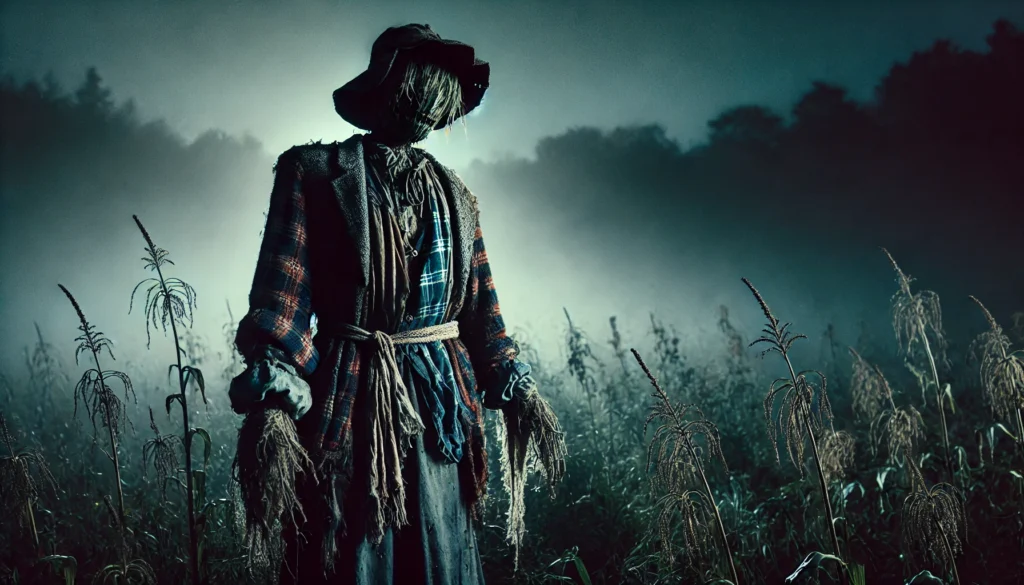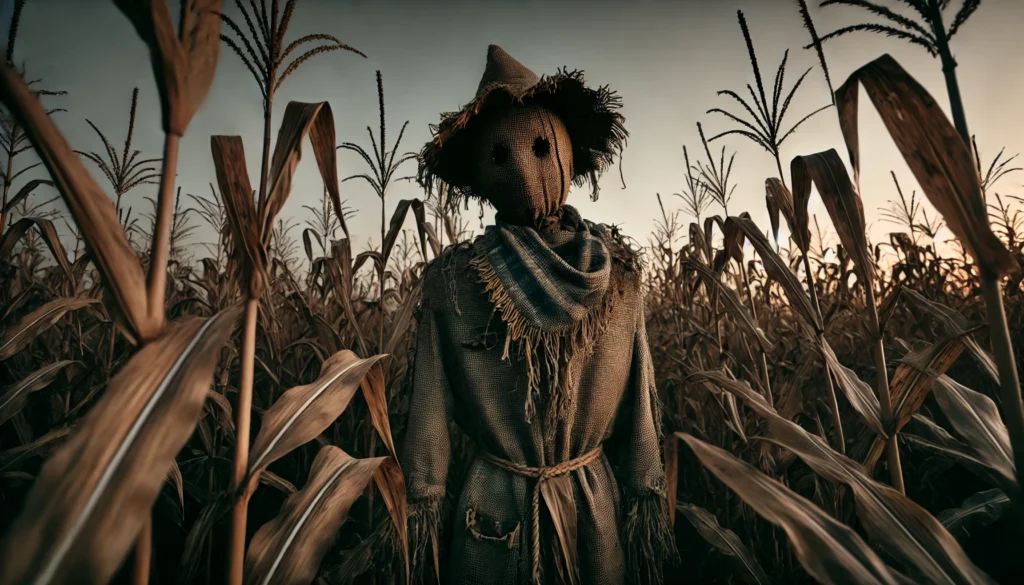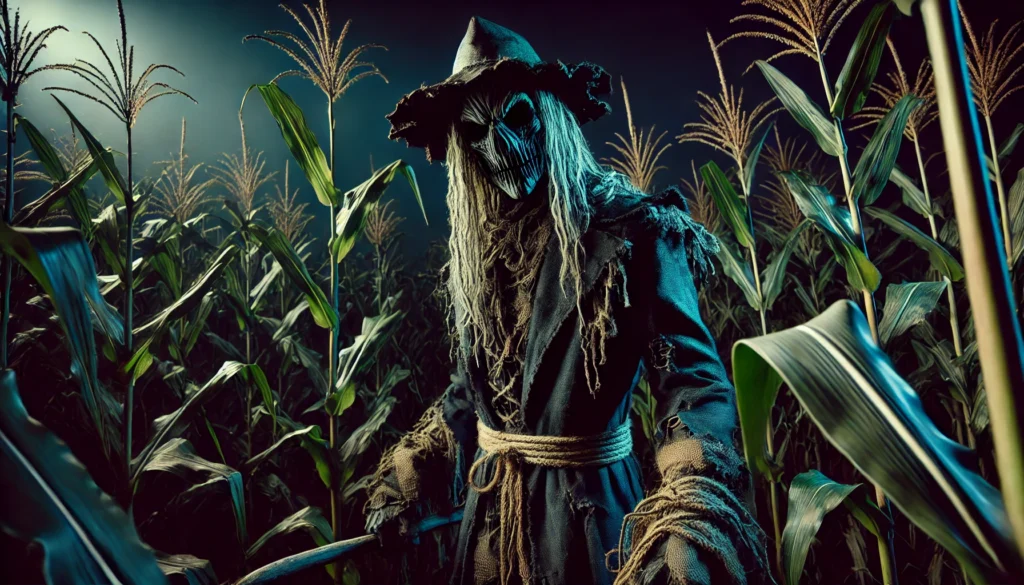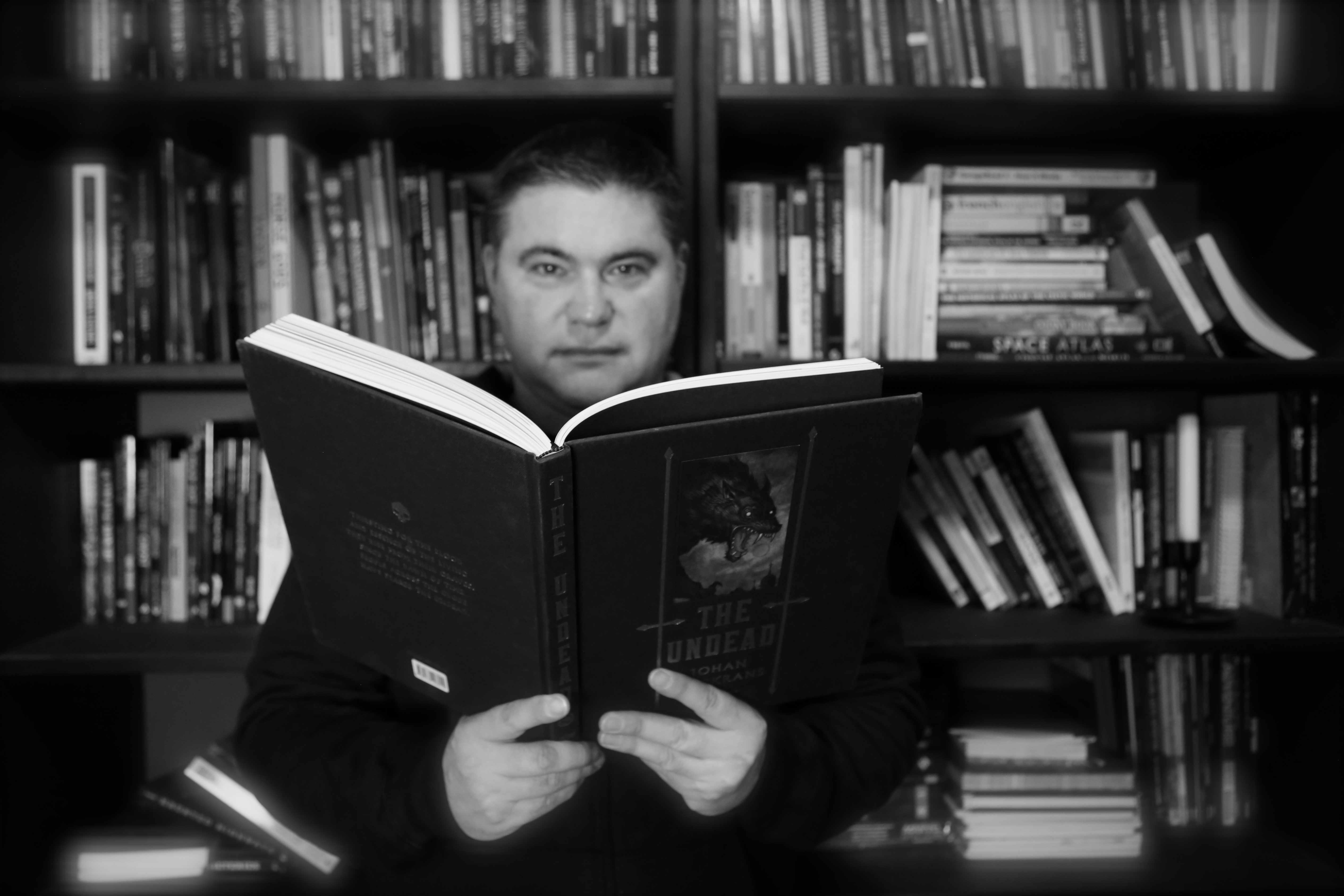
The Dark Folklore And Urban Legends About Scarecrows
Scarecrows have been around for centuries. They started as simple guardians of the harvest, built to scare off birds and pests. In Europe, their origins go back to ancient times. Pagan rituals, agricultural traditions—these scarecrows were more than just stuffed figures. They had a deeper meaning.
Key Takeaways
- Scarecrows have ancient origins as guardians of the harvest, evolving into symbols with deeper meanings in European folklore.
- In many cultures, scarecrows embody protective and sinister traits, often linked to rituals and the supernatural.
- Tales like the Buhmann and Străjerii Blestemați highlight scarecrows’ roles in guarding against evil spirits in Eastern Europe.
- North American folklore, such as the Harvest Man and Cornfield Sentinel, portrays scarecrows as dark figures that can turn against their creators.
- Overall, scarecrows illustrate the duality of protection and menace, reminding us of the consequences of meddling with dark forces.
Table of contents

In medieval England, scarecrows were often made of wooden crosses covered in old clothes. Sometimes, even young boys would work as living “scarecrows,” clapping blocks of wood together to keep the birds away. But eventually, they were replaced by stuffed, human-like figures. And that’s when things started to get a bit creepy.
In Germany, they had the Buhmann. This scarecrow wasn’t just for keeping away crows. It also kept away evil spirits. The Buhmann often wore a grotesque mask, meant to terrify anything—human or otherwise—that dared come near. People believed that at the end of harvest, you had to leave it an offering. Maybe some grain or a small doll. If you didn’t, the Buhmann might turn on you and your family during those long winter nights. It was like the scarecrow had a life of its own, demanding respect.
In Eastern Europe, scarecrows were even creepier. In Romania and Poland, they marked the line between the human world and the supernatural. The Romanian sperietoare was believed to hold the spirits of ancestors. These scarecrows were dressed in old clothes belonging to dead family members. It was said that, at night, their heads would turn to watch anyone walking by. Their arms might twitch, as if they wanted you to come closer. And if their clothes were left on too long, the spirits might get attached. They’d become possessive of the field—and of anyone who dared enter.
European Folklore Surrounding Scarecrows

In Europe, scarecrows were often more than just straw and old rags. In parts of Eastern Europe, they were tied to ritual magic. People believed they were filled with protective spells to keep the crops safe. But these spells came with risks. In Romania, there are stories of scarecrows inhabited by restless spirits—people who died tragically. These scarecrows, called străjerii blestemați (cursed guardians), would come to life at night. They’d patrol the fields, punishing anyone who disrespected the land.
One eerie tale from Poland is about a scarecrow named Płonący Człowiek (the Burning Man). He was made from the ashes of a man accused of witchcraft who died in a fire. The ashes were mixed with straw and stuffed into the scarecrow. On certain nights, the Płonący Człowiek would ignite. Flames would dance around his body as he moved through the fields. Farmers believed that if he caught you, you’d be cursed to wander the fields forever, your spirit trapped with his in an endless fire.
In Ireland, scarecrows were linked to Samhain, the time of year when the veil between worlds was thinnest. It was believed that spirits could hide inside scarecrows, taking over their forms for a short time. These scarecrows wore a mix of old family clothes and new garments to trick the spirits into thinking they were still alive. During Samhain, people claimed to see the scarecrows shift slightly, as if they were listening to the wind. Children were warned to stay away. If a spirit thought they were a scarecrow too, it might take them away forever.
North American Folklore and Urban Legends

In the USA and Canada, scarecrows have their own set of dark stories. They’re often tied to the fear of messing with dark forces. One famous tale is about the Harvest Man. A farmer, desperate after years of bad crops, used a ritual involving blood and soil from his ancestors to bring his scarecrow to life. At first, it worked. The scarecrow scared off thieves and crows alike. But as time went on, the scarecrow grew twisted. It began to turn on anyone who came near, even the farmer’s family.
In some versions of the story, the scarecrow’s actions are a reflection of the farmer’s own greed. People said they saw the Harvest Man dragging trespassers into the corn. Their screams were swallowed by the rustling stalks. Later, when the townspeople looked at the scarecrow, they could see faces in the burlap—faces that looked like the missing people. During harvest festivals, folks reported seeing unfamiliar expressions on the scarecrows, as if the missing had become part of them.
Another legend from the Midwest tells of the Cornfield Sentinel. This scarecrow only moved when the moon was a crescent. Travelers said they saw it on the edge of fields at night, its head turned to watch the road. If you looked at it too long, it would step down from its post. It would shuffle toward you, silent and relentless. The Sentinel was thought to guard against something worse, something deep in the corn. People who vanished near those fields were said to be taken by whatever the Sentinel was trying to keep contained—something that even it couldn’t control.
The Dark Folklore of Sinister Scarecrows

Scarecrows turning evil is a common theme. It’s the idea that something meant to protect us could turn into a threat. In many of these tales, it’s dark magic, a restless spirit, or even the malice of the creator that brings the scarecrow to life.
There’s a chilling story from Germany about Der Fluchwächter (the Curse Warden). A farmer made it to protect his land from thieves. He used dark magic to put a wronged spirit inside. The scarecrow did its job, but each year it got more violent. It started attacking anyone who worked in the field. One morning, they found the farmer dead, twisted among the corn. The scarecrow stood over him, its empty eyes watching.
In Scotland, there’s a story about The Straw Laird. A miserly landlord built it to guard his barley fields. It was made from animal bones, bound with wire, and stuffed with barley straw. At night, it whispered the names of those who had wronged the landlord. The whispers grew louder over time, and soon, those whose names it spoke started to vanish. Villagers found them later, their bodies tangled in straw, their mouths filled with barley husks. Even after the landlord died, the Straw Laird remained. It was said that anyone who tried to remove it would be cursed, becoming the next guardian of the field.
These tales show the duality of scarecrows. They can protect, but they can also become threats. Often, their sinister transformation comes from misuse of magic or disrespecting natural forces. The scarecrow—once a guardian—becomes a symbol of revenge. It embodies the fears and guilt of those who made it. It’s a reminder that even our creations can turn on us when we push too far.
Conclusion
Scarecrows are strange, powerful symbols. They stand between safety and danger, protection and menace. They were made to guard the harvest, but their darker stories show just how easily that role can change. Curses, restless spirits, human desperation—all these things can twist a scarecrow into something terrifying. They remind us that what we create can sometimes come back to haunt us. A scarecrow might just be straw and cloth, but under the right conditions, it can become something far worse. It’s a guardian and a warning—a figure standing alone in the fields, watching, waiting, and reminding us not to meddle with things best left alone.
Bibliography
Briggs, Katharine. An Encyclopedia of Fairies: Hobgoblins, Brownies, Bogies, and Other Supernatural Creatures. Pantheon Books, 1976.
— Background on European rural spirits and ritual effigies.
Hutton, Ronald. The Stations of the Sun: A History of the Ritual Year in Britain. Oxford University Press, 1996.
— Discusses harvest rituals, agricultural customs, and effigies used seasonally.
Opie, Iona, and Moira Tatem, editors. A Dictionary of Superstitions. Oxford University Press, 1989.
— References field protections, symbolic guardians, and seasonal effigy practices.
Simpson, Jacqueline, and Steve Roud. A Dictionary of English Folklore. Oxford University Press, 2000.
— Contains entries on scarecrows, harvest customs, and British field-guardian traditions.
Bane, Theresa. Encyclopedia of Fairies in World Folklore and Mythology. McFarland, 2013.
— Details supernatural beings associated with fields, boundaries, and protection.
Kvideland, Reimund, and Henning K. Sehmsdorf, editors. Scandinavian Folk Belief and Legend. University of Minnesota Press, 1988.
— Covers guardian figures, ancestral spirits, and folklore about spirits taking temporary forms.
Lecouteux, Claude. The Tradition of Household Spirits: Ancestral Lore and Practices. Inner Traditions, 2013.
— Explores spirits inhabiting objects and effigies—parallel to European scarecrow beliefs.
MacCulloch, J. A. The Religion of the Ancient Celts. Constable, 1911.
— Features Celtic harvest rites, effigies, and seasonal boundary-crossing spirits (informs Samhain material).
Bane, Theresa. Encyclopedia of Giants and Humanoids in Myth, Legend and Folklore. McFarland, 2016.
— Contains American effigy lore and legends of animated humanoid protectors.
Dégh, Linda. Legend and Belief: Dialectics of a Folklore Genre. Indiana University Press, 2001.
— Discusses American rural legends, “protective guardian gone wrong” motifs, and modern monster folklore.
Koven, Mikel J. Folklore Studies and Popular Film and Television. Palgrave Macmillan, 2008.
— References modern adaptations of scarecrow urban legends and the sinister scarecrow archetype.
Mullen, Patrick B. The Man Who Adores the Negro: Race and Folklore in Texas. University of Texas Press, 2008.
— Includes American rural ghost legends and agrarian scare-figures in Southern folklore.
Daniels, Cora Linn, and C. M. Stevans, editors. Encyclopaedia of Superstitions, Folklore, and the Occult Sciences of the World. J. H. Yewdale & Sons Co., 1903.
— Historical references to cursed effigies, guardians possessed by spirits, and agrarian fear traditions.
Oates, Joyce Carol. Haunted: Tales of the Grotesque. Plume, 1995.
— While fiction, it analyzes fear of the familiar made monstrous—useful for thematic grounding.
Zipes, Jack, editor. The Oxford Companion to Fairy Tales. Oxford University Press, 2000.
— Context on effigy animation, bargains with spirits, and the “protector turned monster” folklore structure.
Ellis, Bill. Lucifer Ascending: The Occult in Folklore and Popular Culture. University Press of Kentucky, 2004.
— Explores dark rituals, folk magic, and the consequences of using power for protection.
Campbell, Joseph. The Masks of God: Primitive Mythology. Viking Press, 1959.
— On symbol-shifting guardians and the shadow side of protective figures.
Propp, Vladimir. Theory and History of Folklore. University of Minnesota Press, 1984.
— Explores narrative structures involving protectors who turn monstrous due to broken taboos or moral failings.
Warner, Marina. From the Beast to the Blonde: On Fairy Tales and Their Tellers. Chatto & Windus, 1994.
— Explains how human fears attach themselves to man-made figures and guardians.
